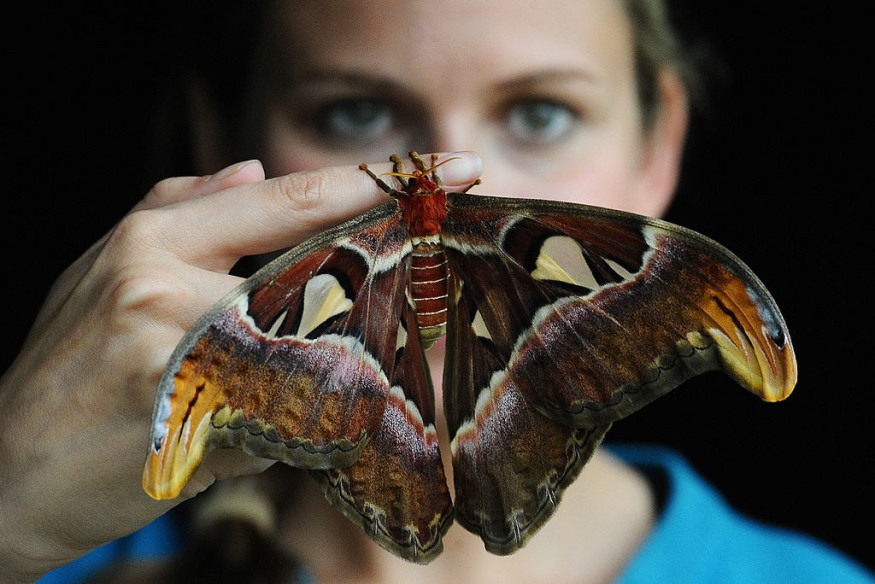
The atlas moth is popular to put on a type of disguise in which it 'transforms' into a cobra to frighten off its predators.
Is An Atlas Moss Rare?
The Atlas moth, a huge insect, boasts a staggering wingspan of over 12 inches, dwarfing a typical human hand. During their larval stage, these creatures can grow up to five inches, dedicating their existence to devouring citrus fruit, guava, Jamaican cherry trees, and cinnamon leaves. To endure both their month-long pupa phase and their adult moth life, where they cease eating entirely, they amass sustenance voraciously.
Consequently, their fleeting existence lasts a mere one to two weeks after unfurling their majestic wings. During this brief period, they predominantly rest during the day, conserving energy, and embark on nocturnal quests for mates. In the U.S., Atlas moth sightings were exceedingly scarce, bordering on nonexistent until recent times, which makes the insects rare.
Why Is It Called the Atlas Moss?
The moth, which is indigenous to China, India, Malaysia, and Indonesia, is named after Atlas, a Titan god from Greek mythology.
Atlas, who is referred to be the enormous deity of endurance and astronomy, was tasked with holding up the heavens for all of eternity.
Even if it is appropriate that one of the largest moths in the world has a connection to Atlas, it is unclear whether the bug was actually given his name.
Its name may have originated from the markings on its wings, which also resemble a paper map, according to scientists.
The moth is known as the "snake's head moth" in Cantonese because the tips of its wings resemble the head of a poisonous cobra.
How Does An Atlas Moss Scare Off Its Predators?
Atlas moths have what appears to be an innate defense mechanism against predators; their wingtips resemble cobra snake heads.
The Atlas Moth will move its wings gently in the manner of a snake to fend off danger. It appears plausible that this wing marking is a survival strategy because cobras are found in the same regions as the atlas moth and because its primary predators, such as lizards and birds, are visual hunters.
The atlas moth also contains what appear to be fake eyes on its wings, which can deter predators if the snake patterns alone are insufficient. In addition to startling predators, these eyes can divert them away from the moth's body's more delicate areas, possibly saving it from death if attacked or preyed upon.
Why Do Moths Resort to Camouflage or Mimicry?
Birds, spiders, lizards, and other animals all feast on butterflies and caterpillars. Lepidoptera, the class of insects that includes butterflies and moths, have evolved a multitude of passive defense mechanisms since they are largely powerless against many of these voracious predators.
One way is to utilize camouflage to make oneself less noticeable. A butterfly's coloring and wing design may help it blend in with its surroundings. When they are at rest and have their wings closed, some may resemble dead leaves on a branch or even other creatures.
Related Article : Warming Weather Encourages Extremely Rare Species Black-Veined White Butterfly to Return to Britain After 100 Years
© 2025 NatureWorldNews.com All rights reserved. Do not reproduce without permission.





